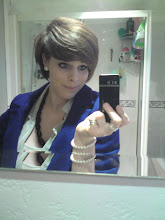Who were the distributors?
The films main distributor was Universal Studios who are a big Hollywood company that is partnered with the production company “Working Title”. Universal Studios have done other big films such as Nanny McPhee and the Big Bang which is another Working Title film to big films such as E.T.
Who was the target audience?
I would say that the target audience is anyone who can appreciate good rock and roll music. As the film was set in the 60’s and was based on the Radio Caroline who and around 25 million listener back then, there would be a lot of people wanting to re-live their youth.
How did the film-makers decide where to release the film and when?
The film was released in the UK on the 1st April 2009 and the on the 13th November 2009 in the USA and Canada where it was re-edited and re-named to “Pirate Radio”. It was re-edited because it was too long so Curtis deleted approximately twenty minutes of footage from the original UK version
What was the marketing and advertising strategy for the film?
Film marketing, trailers and posters.
Was there a premiere?
The premiere was held where must premieres are held at London's Leicester Square, and had people as big as Sir Paul McCartney show up.
Was the film distributed to digital cinemas?
The film was distributed to digital cinemas such as Cineworld and the Odeon
When did it go to DVD, HD-DVD?
For DVD release was for region 1: 13 April 2010, region 2: 7 September 2009, region 4: 12 August 2009.
For Blue-Ray the release was region 1: 13 April 2010, region 2: 7 September 2009, region 4: 12 August 2009.
How important are internet, downloads and YouTube?
To advertise a film the internet is the perfect place to do just that, you can get websites such as YouTube that will show videos of trailers, interview and sneak peaks of the film, giving the viewer something to look forward to. It is also an easy way for “word to mouth” but using social networking sight such as Facebook, Twitter, MySpace and the many more out there. Unfortunately the internet is not always a good thing, with more pirate (no pun intended) copies of movies, the inter net has become a hot spot for download the film for free to watch it or watching them on illegal sites.
What outlets were used for advertising?
There were many different outlets used for the advertising of The Boat that Rocked. They use trailers to be played on the TV and for the previews in the cinema; they have also done a series of different posters, from teaser posters to the films main poster.
Were TV spots used?
Yes. There was a TV spot used, as Universal approaches television as a crucial mechanism for communicating with the marketplace, they did a small 29 second mini trailer to air.
Were there any merchandising tie-ins?
There were a few merchandising tie-in for the film as there is an iPhone app that you can download, which is free (maybe telling us that it was not very popular and nobody wanted/ or would want to pay for it.) the app is “The Boat that Rocked Top Trumps” and the rating it has got is 2 and a half stars from 1706 ratings. There was posters for the film and there was also the soundtrack for the film.
Was any additional publicity gained and if so, how?
The cast of The Boat that Rocked all did interviews both in the UK and in the USA, some interviews were for the TV. Additional Publicity was gained in the USA by re-naming the film “Pirate Radio”
How did the distributors market the film by utilizing 'the talent' to appear on TV and radio shows?
Universal Studios marketed the film by using a series of poster that slowly built up to the films main poster, by using teaser poster that didn’t hold loads of information about the film, but only had the characters image on them, thus introducing the characters/actors or actresses in the film. There were also several different trailers that appeared on TV. All of this led to the actors/actresses getting interviews on the TV programs and on radio shows.
What kinds of press stories were released as and before the film came out?
The film got a lot of mixed reviews, most of them being bad. One of the things said to be bad about the film was “the 135-minute running time puts you at severe risk of cabin fever.” That it was too long.









